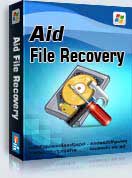Can a Win 10 install on a GPT formatted SSD primary read an MBR/NTFS formatted HDD secondary in Windows 10/Windows 7/Windows 8/Windows 8.1/Windows XP PC, best format recovery software help you recover MS word,excel, pictures, music, video files from Can a Win 10 install on a GPT formatted SSD primary read an MBR/NTFS formatted HDD secondary
Use "unformat" to recover formatted drive for " Can a Win 10 install on a GPT formatted SSD primary read an MBR/NTFS formatted HDD secondary" after quick format,full format,accidentally formatted,reformatting,High-level formatting,Low-level formatting.
Use "recover partition" to recover files - Can a Win 10 install on a GPT formatted SSD primary read an MBR/NTFS formatted HDD secondary laptop partition,lost partition,changed ,damaged partition.And if the size or position of partition is changed by format,It can not recover with "unformat"so you can use "recover partition"mode.
Use "undelete" to recover deleted files - Can a Win 10 install on a GPT formatted SSD primary read an MBR/NTFS formatted HDD secondary after Virus attack,Recycle bin clear,disk cleanup,Press shift del by mistake,permanently empty recycle bin,shift delete ,accidentally deleted by a mistake.
Use "Full Scan" to recover data - Can a Win 10 install on a GPT formatted SSD primary read an MBR/NTFS formatted HDD secondary which can not be found with "undelete" and "unformat" and "recover partition",after showing an error,display as raw file system,unformatted,unknown partition,unpartitioned,needs to be formatted,or the file system is not exfat,not fat32,not ntfs.
"Can a Win 10 install on a GPT formatted SSD primary read an MBR/NTFS formatted HDD secondary ", Current system (Lenovo K330) specs: MB: Lenovo ciP67m CPU: i7-2600 (3.4ghz) RAM: 12GB DDR3 1333 HDD: Seagate ST31500341AS 1.5TB GPU: MSI Radeon HD 6770 1GB DDR5 VRAM OS: Windows 10 Home 64bit build 1607 I'm trying to figure out a way of updating my system to a newer MB that is UEFI capable, and don't want to loose the data on my HDD that reformatting and re-partitioning from MBR to GPT would cause. My thought on the best way to do that would be to use an inexpensive SSD to do a clean install of Win 10 to use as my primary/boot drive formatted for GPT/UEFI, and use my current HDD as a secondary/storage drive. I'm finding a boatload of articles and guides about the differences between MBR and GPT, and about the differences between UEFI and BIOS, and the advantages about the newer systems, etc... But nothing that answers the question - will the GPT/UEFI booted system see/read the old MBR/NTFS formatted hard drive?
Formatting a disk for use by an operating system and its applications typically involves three different processes.High-level formatting is the process of setting up an empty file system on a disk partition or logical volume and, for PCs, installing a boot sector. This is a fast operation, and is sometimes referred to as quick formatting. Reformatting often carries the implication that the operating system and all other software will be reinstalled after the format is complete. Rather than fixing an installation suffering from malfunction or security compromise, it may be necessary to simply reformat everything and start from scratch. Various colloquialisms exist for this process, such as "wipe and reload", "nuke and pave", "reimage", etc. Sometimes, data present in the physical drives (Internal/External Hard disk, Pen Drive, etc.) gets lost, deleted and formatted due to circumstances like virus attack, accidental deletion or accidental use of SHIFT+DELETE. In these cases, data recovery software are used to recover/restore the data files. Logical recovery of files, partition, MBR and filesystem structures After the drive has been cloned to a new drive, it is suitable to attempt the retrieval of lost data. If the drive has failed logically, there are a number of reasons for that.Data damage can be caused when, for example, a file is written to a sector on the drive that has been damaged. This is the most common cause in a failing drive, meaning that data needs to be reconstructed to become readable. Corrupted documents can be recovered by several software methods or by manually reconstructing the document using a hex editor.
Aidfile Recovery Software Keyfeature
support FAT32 EXFAT NTFS and RAW file system
support Win32 (32 bits) and Win64 (64 bits)
Support Windows XP, Windows 8, Windows 8.1,Windows Vista, Windows 2003, 2008, 2012,Windows 10,Windows 7 .
Desktop & laptops Ultrabook:HP Pavilion,HP Compa,Alienware Alpha,Lenovo ThinkCentre,Lenovo IdeaCentre,Dell Inspiron,Dell XPS,Sony VAIO,Acer Aspire,Asus Transformer,Dell Latitude,Samsung Ativ Book,Asus VivoBook,HP Envy,Lenovo IBM ThinkPad,Lenovo IdeaPad Yoga,Microsoft Surface,Toshiba Satellite
MS Office document (Word, Excel, PowerPoint, Outlook) types (doc, docx, ppt, pptx, xls, xlsx, pst, etc.),photos (JPG, PNG, ICON, TIF, BMP, RAF, CR2, etc.), videos and audios (MPG, MP4, MP3, MTS, M2TS, 3GP, AVI, MOV, RM, RMVB, etc.), compressed files (rar, zip, etc.), PE files (exe, dll, lib, etc.) and so on.

